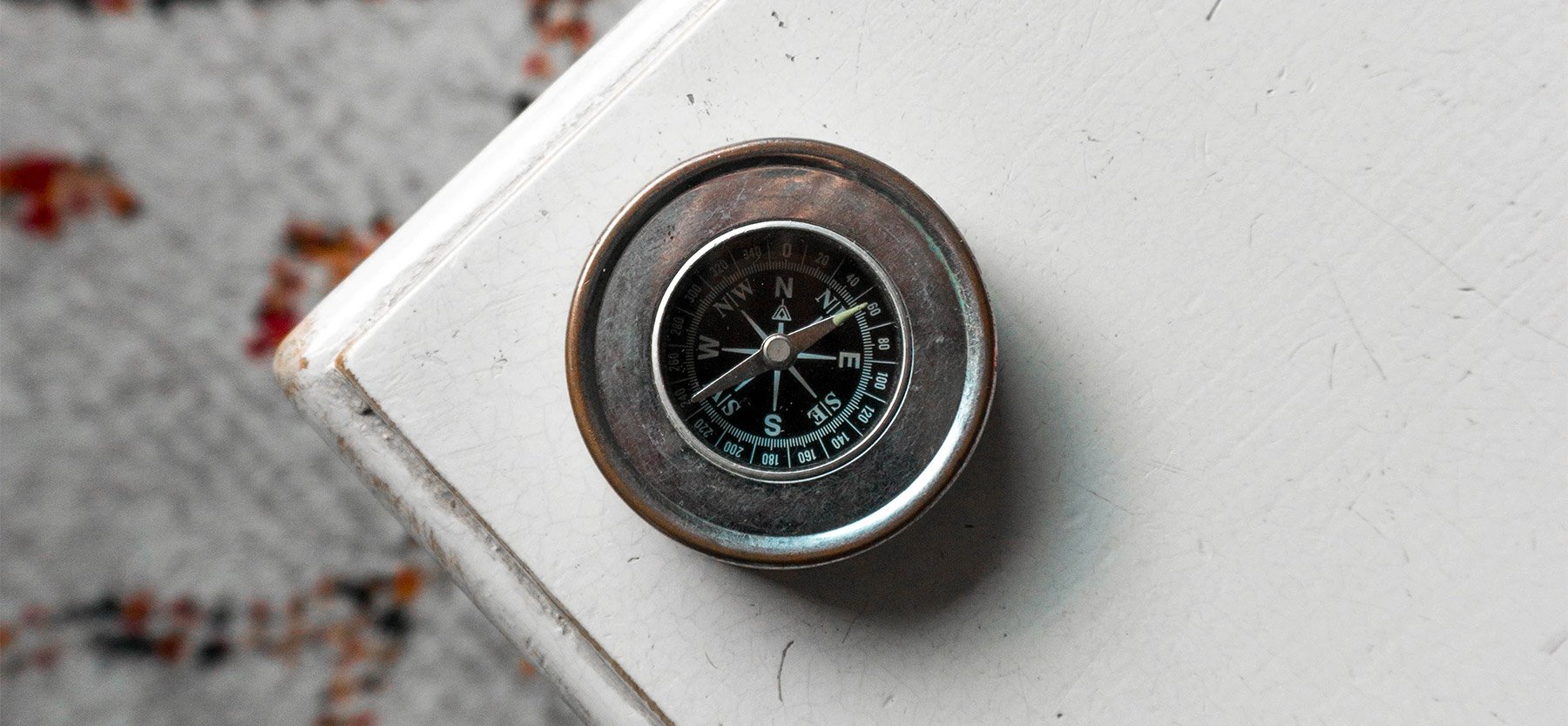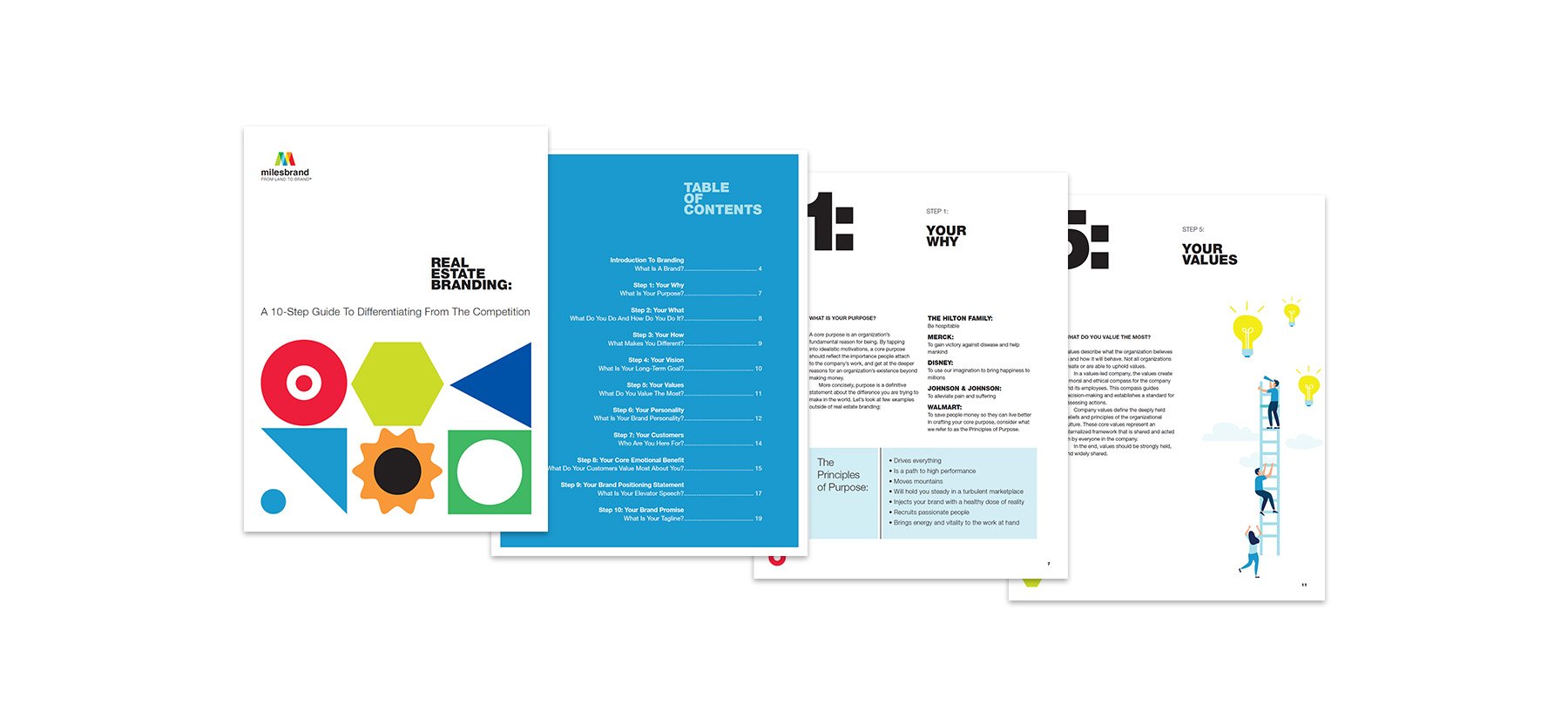September 07, 2023
Elevating The Home Builder Customer Experience
If you look at the historical data for online mentions of "customer experience", you'll find a steep curve climbing up and to the right.
For most, this isn't much of a surprise. Customer experience—for home builders or otherwise—is something that continues to become top-of-mind. A recent study found that 81% of companies cite customer experience as a competitive differentiator and 45% of businesses state customer experience is their top priority for their business.
The truth is a great customer experience will often go further than any other brand-building effort. It's the difference between simply selling a satisfactory product and creating a lasting brand-to-buyer relationship. And today, it can be the difference between success and failure.
Home builders must consider customer experience throughout all touchpoints of the home buying journey to establish strong brand awareness, increase brand engagements and differentiate the business from the competition.
Let's take a look at what the customer experience is, why it matters and how it applies to the home buying journey.
“The customer experience is the next competitive battleground.”
Jerry Gregoire
What is a Customer Experience?
Customer experience is the collection of touchpoints your home buyers have with your home building brand throughout the home buying journey including their path from searching for their new home, purchasing their new home and all interactions with your entire home building team. From first discovering your homes and communities to closing day, your customer experience essentially refers to how frictionless and rewarding or frustrating and underwhelming it feels to purchase a new home from your company.
More simply, the customer experience is exactly what it says – what it's like to be your customer and ultimately a homeowner in one of your communities.
Of course, you want the home buying experience to be a positive one, including an experience that is as easy and stress free as possible. Customers who are enjoying their home buying experience know where they are, where they are going and how to get there. A good customer journey strategy directs them along the way and ensures their satisfaction at every touchpoint. Developing an exceptional customer experience is understanding that people desire to feel seen and valued by the brands they like and finding ways to demonstrate that your brand does just that.
As with most experiences, people want to have an idea of what to expect and where the finish line is. This minimizes confusion and builds confidence in your brand and your home building team. It’s important to consider customer expectations for the brand and become present on every medium where potential home buyers engage to increase reach, establish strong credibility and build brand loyalty. Doing so is highly beneficial because it both boosts your customer’s confidence in their purchase decision and leads to future recommendations.
There are more opportunities than ever to provide home buyer experiences that go beyond typical expectations. Don’t settle for the bare minimum within your brand marketing strategy, seek to impress your home buyers and set high standards for the customer service they receive.
Before we move on, let's think about a couple of factors that make the real estate and home builder customer experience unique.
Home builders face two unique dynamics:
- Relatively long sales cycles
- A high-ticket purchase (perhaps the highest most people will ever make and one they do not make often)
Naturally, this means the customer journey takes longer and matters more. It also means you have increased opportunities to make the experience an exceptional one. Rather than a short-lived sales cycle, home builders have a significant period to connect with their home buyers and realtors, deeply understand their needs and build long-lasting client relationships. It also provides home builders the perfect opportunity to earn referrals from their home buyers, homeowners and realtor partners.
Why Does it Matter?
A predictably positive customer experience is essential. But why? Let's go through a few reasons:
1. Competition
There are a lot of players in any given industry. And as you know, home building is no exception. Because businesses exist as one of many choices, customer satisfaction is key. A recent study shows that 86% of buyers are willing to pay more if they receive a great customer experience from a business. Research also shows that 73% of consumers view their experience with the brand as a highly important factor of their purchasing decisions, even more so than price and quality. This means relying on the exceptional quality of your homes or great price points to make sales isn’t the best strategy. While those also make strong selling points, there’s no denying the impact of providing a positive customer experience to strengthen home buyer trust and confidence in purchasing a new home with a specific home builder.
Here are some compelling stats for you:
- The number one reason customers change to a new brand is because they feel unappreciated.
- An upset customer will tell at least 15 people about their negative experience.
- 73% of companies who are ranked “above average” for customer service financially outperform their director competitors.
The takeaway here is that among everything you can be doing to reach your sales goals and earn market share, developing a great customer experience is one of the strongest tools available.
And without it, poor performance will come quickly and grow rapidly.
Tip: Think about a brand you’ve had positive interactions with. Let’s say you discover another brand with similar, maybe even better, products, but their customer service is poor. Would you be tempted to stop purchasing from the first company and switch to this new brand? Our guess is probably not! That’s why it’s important to focus on the customer experience as that is always a top consumer priority as they make purchase decisions.
2. Expectations
Social proof, crowdsourced info and customer reviews that are available to home buyers and realtors at the click of a button mean the curtain is drawn way back on every brand out there. Today, the average consumer can go anywhere and find anything – or stay home and find anything by simply utilizing the power of the Internet.
The output of this connectivity, coupled with huge gains in brand-to-buyer relationship tools, is customer expectations set at an all-time high. Although this may seem like a challenge, it’s an opportunity for brands to creatively engage their customers, consider their desires and utilize that information to guide their strategy for a positive customer experience.
Because winning brands can and do offer overwhelmingly positive experiences, customers no longer have patience for the alternative. Prior experiences have shaped them. There is simply no longer room for disappointment. The bar for customer experience success is higher than ever, which means there’s no better time to find ways to improve the home buyer journey and discover where customer service can improve.
Most people who buy a home from you will have expectations about:
- The quality of your product or service
- Price
- Communication (frequency, style, and channel)
- Timeline
A great customer experience includes enough checkpoints through the right channels to empathize with and attend to a customer’s expectations. If you don’t plan for meeting implicit and explicit expectations, you’ll likely lose out.
Tip: Think about some of your favorite brands. What exactly did they do to win you over? What is it like to work with them? Today, there's no shortage of good experiences out there. So find them, and emulate them.
3. Education
Your customers have studied you. And they've studied your competition. They have researched you extensively online, asked social groups about you and vetted you. All before ever blipping on your radar. This is both a pro and a con.
If your branding and marketing are up to par, this works in your favor—potential home buyers come to you already knowing who you are and what you can provide during their home buying journey. Better yet, they arrive ready to trust you.
The downside comes when they don't like what they find through research. Perhaps they didn't respond to the branding. Maybe the copywriting didn't land, or there was too much information left to be desired. It’s crucial to consider the entirety of the customer journey, even before consumer engagement with the brand begins.
The bottom line: we're all researchers now. If your customer experience doesn't account for all the time potential home buyers will spend researching your brand and your competition, you're likely missing something big.
4. Customer Reviews and Word-of-Mouth Recommendations
Satisfied customers are truly a brand’s best form of advertisement. By keeping customers happy, they’ll be more than willing to share their home buying experience with others and provide effective social proof for your home building brand. Even if a customer doesn’t independently provide a review, you can always ask your satisfied customers with whom your company and team has a strong relationship to leave honest testimonials about their experience. Not only does this provide a positive first look at your brand for consumers researching your company, but it also establishes brand credibility and forms a beneficial brand reputation.
Consumers strongly trust recommendations from others, this has been proven time and time again. Friends and family are often seen as the most credible source of information about brands according to 92% of consumers.
When brands provide exceptional customer experiences, this leads to positive reviews and word-of-mouth recommendations. Along with the power of word-of-mouth recommendations, 90% of buyers are influenced by reading positive brand reviews when making purchases. As more homebuyers recommend the brand, more new customers will be attracted and significantly boost sales.
Tip: Think about a time when someone recommended a brand to you. Most likely, it made you curious to learn more and look into the brand yourself. A simple recommendation goes a long way in boosting the brand awareness and attitude surrounding a company. That’s why it’s important to provide customer experiences that buyers want to share with others.
What is a Home Builder Customer Experience?
Now that we've covered what customer experience is and why it matters, let's take a more specific look at the home builder customer experience.
To elevate the home buying experience you offer, it can be helpful to first break down each phase along your typical customer journey.
Phase 1: Awareness
The first phase in the home buyer's journey is called the awareness phase. This is where the customer identifies their need for a product or service. This part of the home buyer journey describes the moment a customer decides it's time to look for a new home.
This decision is one of many that will happen before potential home buyers cross your path. In most cases, the home buyer will begin research with fairly specific parameters in place. These are typically rigid factors that set the expectations home buyers have for their new home and community such as price range, location, number of bedrooms/baths, square footage, amenities, etc.
While you don't have much control over home buyer preferences, you do have control over attracting the right type of home buyer for your homes. Consider the ideal home buyer, what are their needs, desires and expectations for their new home? Use this information to direct your content strategy and provide details about your homes and communities that will appeal to these potential home buyers.
Immediately after this phase, well-branded and reliable resources will win the home buyers' attention. Several home builders will be competing for home buyers’ consideration, so it’s crucial to find ways to differentiate the brand during this initial search for information. Because customers are just on the verge of starting their journey with you, you need to prepare for an excellent first touchpoint.
With a strong marketing strategy, this can be accomplished in many ways. But some of the most effective are offering a beautiful, easy to navigate and information rich website, digital collateral, informative copywriting, effective online assistance, engaging social media posts, podcasts and other forms of media that position your home building brand as a trustworthy expert.
Most of what we just listed leans heavily on your branding. In the first few seconds of interacting with your brand, customers start to form an opinion. Great branding guarantees it's a good one.
Now – let's earn prospective home buyers' attention and convert them into leads. This is where marketing takes the reins.
Phase 2: Consideration (Part 1)
Prospective home buyers are looking for home builders like you, so this means you need to broaden your pathways for exposure. The biggest mistake home builders can make is not advertising effectively or implementing routes for home buyers to discover the brand organically. By neglecting these touchpoints, the customer experience won't matter for a clear reason – it won't ever begin.
Most of the following marketing tactics act as a home buyer's first touch point with your brand:
- Paid search ads
- Landing pages
- Display ads
- Print ads
- Social media ads
- Traditional, offline advertising (e.g. signage)
- Streaming audio and CTV Advertising
- Your website
- Content marketing/blog
Whichever tactics you employ, a great home builder customer experience starts with a terrific first impression. How do the marketing tactics look, feel and resonate with prospective home buyers? How does the content read? Does it create an appealing vision of your new homes and communities? Does everything function seamlessly? Is there an appealing call to actions that pulls home buyers further down the marketing funnel? Do you have an online sales presence that effectively and promptly responds to home buyer inquiries?
Note: Today, it's especially important to bridge the gap between digital and in-person experiences. Online tours and vivid virtual offerings can capitalize on attention and set you apart.
For our home builder clients, we aim to create an overwhelmingly positive first touchpoint with their prospects. Developing a compelling brand is only one piece of the puzzle, but what’s also incredibly crucial is shaping the way customer relationships form with the builder. Take a look below at our branding and omnichannel marketing approaches we designed and implemented for several of our valued clients.
Phase 3: Consideration (Part 2)
At this point, a customer has identified their need for a new home. Then, through research or word-of-mouth, they've encountered one or more of your branding and marketing touchpoints. At this stage, they have placed your brand under consideration as an option for finding their new home. But an important key to remember is that they have not made any clear decisions yet, so this is your chance to sway them and demonstrate the unique value proposition offered by your home building brand. Here, the goal is to convert them into a lead and nurture them through your sales funnel.
Hand Raisers
In some cases, home buyers in the consideration phase will love what they see enough to reach out directly. This can happen through your online contact form, live chat, a phone call, or perhaps an in-person visit to one of your communities. We call these leads "hand raisers" and consider them highly qualified.
But however the channel, it's critical these hand raisers have a rewarding and seamless experience while reaching out. They have made the first step of reaching out to your home building business, so it’s crucial to deliver an experience that values the home buyer’s time and attention and meets expectations. When done poorly, even something as simple as a contact form can create friction. For clarity, let's briefly run with this example.
Ask yourself the following:
- What questions are being asked on the form?
- How many questions are being asked?
- Which questions are "required responses" and how might that be too taxing?
- Does the form function perfectly?
- When it's submitted, is there a well-written thank you message?
- Is there an immediate, automated follow-up email that sets expectations for a response?
- What is the response?
- After the automated follow-up email, how quickly is a personalized follow-up sent from your online sale counselor?
The point is every little thing matters. Just as we did above, you should also ask yourself similar questions about every other medium or channel a hand-raising customer can use.
Non-Hand Raisers
For less qualified prospects, you'll need to do some nurturing. Aside from reaching out to you directly, there are plenty of other ways to capture and eventually nurture leads.
Because potential home buyers need a lot of information to pique their interest, a successful home builder knows to offer just that. The idea is to provide helpful, well-packaged information in exchange for basic contact details. The more value you provide to these homebuyers, the more likely they will be to continue their home buying journey through the marketing funnel with your brand.
For example, in exchange for an email address and phone number, a home builder could offer a downloadable digital brochure or a comprehensive guide to finding the right home. This entire concept is known as information-first marketing.
Nurturing Leads
Once a lead is captured, how do you positively nurture them? This is a crucial stage in the process and one in which many prospects are lost. The secret sauce is often a combination of components such as personalization, valuable information and strategic invitations—most of which can be automated to speed the process and create more efficiency.
The truth is, lead nurturing is a massive topic on its own. But in terms of the home builder customer experience, we encourage you to audit every touchpoint in your nurturing process. More often than not, you'll find plenty of opportunities to empower and effectively move your leads down-funnel.
Phase 4: Decision
The point of purchase is emotional — especially for someone buying a new home. There can be moments of euphoria. There can be feelings of doubt. Sometimes all at the same time. Home buyer remorse is likely to set in.
But this makes it a huge opportunity to make them feel appreciated and looked after.
People buy a home for many reasons. But by the point of decision, the forest can be lost for the trees. It can be helpful to assume most new home buyers will at least unconsciously ask themselves, "Am I making the right decision?"
As the provider of their very own home builder customer experience, it's your job to delight home buyers even at the point of sale. When you deliver an amazing customer experience, home buyers will feel assured and remain confident in their purchase decision from start to finish.
Aside from securing the sale, improving your customer experience will increase the likelihood of referrals and turning a customer into a raving fan.
If you're already mindful of your end-to-end customer experience, that's great news. But let's close with a final phase most businesses ignore or drastically underemphasize.
Phase 5: Post-Purchase
To wrap up, let's consider how a positive buyer-builder relationship can yield returns for years after the sale itself. While it may seem like customer service only matters during the home buyer’s purchase journey, high-performing brands know that providing an excellent customer experience extends well beyond the sale.
As previously mentioned, customers desire to know that they are valued and understood by the brands they buy from – especially when they’re making such an important purchase like a new home. That’s why home builders need to demonstrate their passion for their customers by continuing to engage these home buyers even after providing their new home.
Here are some post-sale tips for properly tying a bow on any given customer experience:
- Kindly ask for feedback
- Respond quickly and effectively to all inquiries
- Deploy follow-up sequences
- Send relevant and thoughtful newsletters and updates
- Add value through resources, advice, and guidance
The ultimate goal of post-purchase marketing is to remind the customer they were more to you than a sale. Continue the conversation. Help where you can.
If you are a welcome and familiar voice, you will have abundant long-term advocates who will promote your home building brand and your new home communities. Today, the people have the power. And what a great thing that is.
A Better Home Builder Customer Experience
Customer-centricity is an ever-evolving framework and the bar for exceptional customer experiences continues to rise. But by taking steps to improve, meet and even exceed customer expectations, you will grow your bottom line and stand out against your competition. It’s vital to shape customer experiences positively to form favorable impressions and create valuable home buyer, homeowner and realtor relationships.
If you're not sure where to start, that's where the Milesbrand team comes in. We are dedicated to branding and marketing in the home building and real estate industry, including partnering with our clients to improve their home buyer experience.
Contact us to learn more about how we can help your home building brand and set you up for success.












